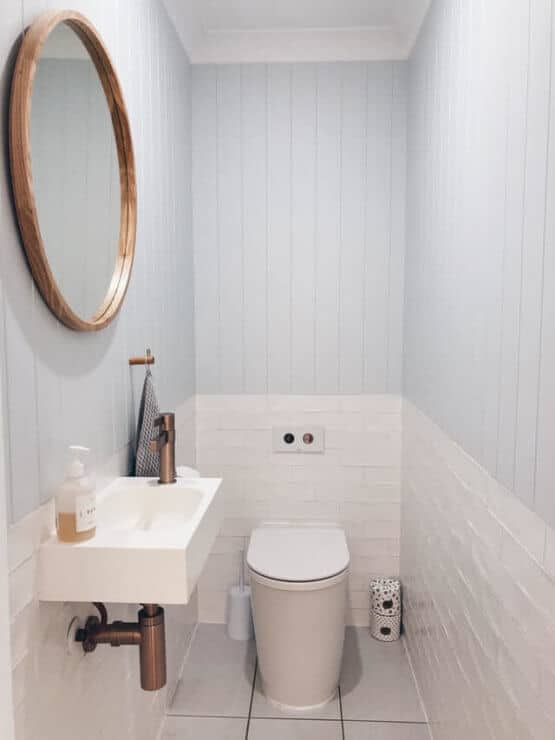The issues of pests are consistent within every household. No matter how much we pay attention, there will be occasional situations where these pests will still crawl into our homes. When that happens, it’s important to know how to resolve them. For drain flies, we are answering: will bleach kill drain flies?
Will bleach kill drain flies?
Bleach is a powerful cleaning solution that we frequently use in our everyday life. The problem with it usually stems from the overall potency of the item. It is a very strong tool with some drawbacks.
Aside from the harmful effects bleach may have on the pipes, bleach flows quickly throughout the pipes. This trait may result in bleach going over nests and eggs, merely damaging them rather than wiping them out. [1]
Let’s check what some other ways we can clear up our drain before resorting to bleach are. Then we can discuss its application and the dangers of using it.
What causes drain flies?
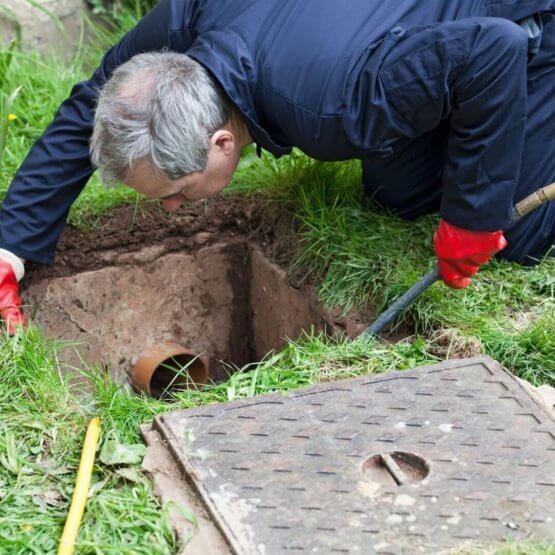
As with every problem within our household, drain flies come from our home’s installations malfunctioning in some way. Drain flies have a certain tendency toward drains, specifically because of said drains being the most potent location for these creatures.
Drain flies will most frequently be found in areas of stagnant water and bacteria. These locations are optimal for their survival, drawing them in. This is why you see so many flies around the stagnant water areas, it’s the most fitting biome for their growth. [2]
When it comes to drain flies, they pick out the most favorable place in our household to nest. Any drain with the accumulation of water will do. It doesn’t matter whether it’s a sink, shower, or bathtub, drain flies will gather around the area regardless.
Stagnant pools of water in our installations can often happen due to lack of use or some inside damage. The simplicity of this cause is exactly what makes drain flies so obnoxious as pests.
Another trait of drain flies that will make them infuriating is the fact that they can reproduce in 48 hours. This reproduction speed means that even the smallest infestation can turn into a huge problem pretty fast.
If you possess areas with stagnant pools of water and don’t have drain flies yet, we heavily recommend getting rid of them. Either by fixing the problem which causes this pooling or by drying out the pool itself.
Drain flies not coming from drain
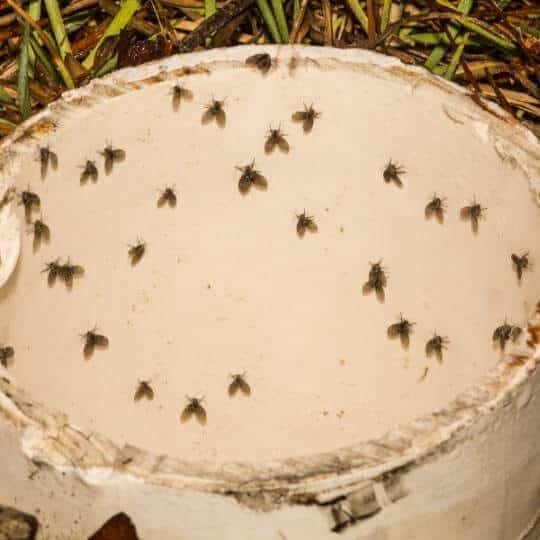
You may be surprised, but drain flies aren’t exclusive to drains. The name may be a bit misleading, although it is the most common location for these pests to set up in. In reality, any stagnant pool of water will do for drain flies. Be it one that forms from your pipes leaking or a moist area within the pipes.
Don’t be surprised if drain flies are not coming from the drain. They could be found in any part of the house and fly throughout the home. The best thing to do is track them down. Either by following them or looking for leaks within your household.
If the suggestions mentioned above don’t work, drain flies may be coming from somewhere outside. For example, check the yard or nearby open pipes. The flies might have found a pool of water to settle in.
Once the source of drain flies has been found, we can start dealing with them. While those flies outside of our drains may be dealt with through certain insecticides, those within our homes need a different approach.
Using insecticides inside could harm other people within the household and lead to odd side effects that are better to avoid due to the health risks they may pose.
What kills drain flies?
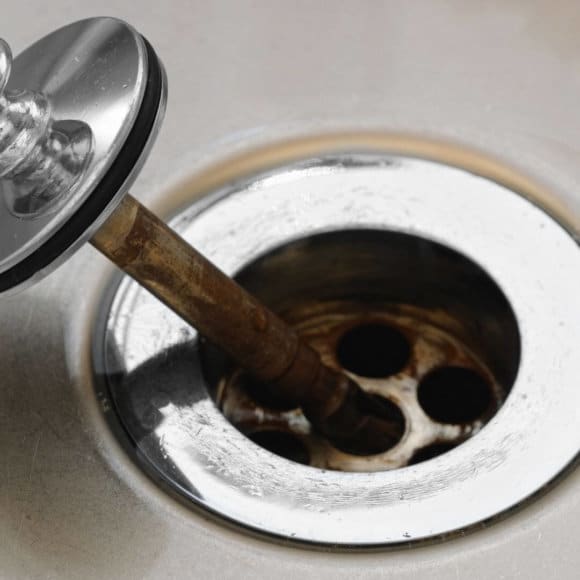
Facing these problems, we’ll end up seeking for the best solution to the problem. These can come in multiple forms, providing solutions that fit everybody.
We suggest pre-made drain fly killer.
Of course, you can try homemade solutions too, the better it is due to the ease of its applicability. Regardless, it’ll help us prevent bugs coming from our drain.
Vinegar and baking soda
The best solutions for a clean home are usually ones that include common products found within the household. The overall complexity of the cleaning process is therefore kept very simple and cheap.
The first type of cleaning we can employ is one that utilizes vinegar and baking soda. This method of cleaning your drain of drain flies is also useful for getting rid of any clogs within the drain.
This cleaning method’s double-duty will clean out drain flies and make it harder for them to appear again. After all, clogs can be the source of drain flies as they enable water to pool and bacteria to accumulate.
To clean the drains with this method, pour half a cup of baking soda down the drain. Follow it up with a cup of vinegar. Make sure to pour vinegar slowly, allowing it to mix with the baking soda. By doing so, we will create a bubbling mixture.
Don’t be worried. The bubbling is a normal reaction. Leave the mixture sitting in the pipes for about 30 minutes. After that, the mixture should clear out all of the drain flies, impurities, and clogs.
All you have to do now is boil some water in a kettle and pour it down the drain. It will clear out the mixture and flush down the remaining trash. [4]
Dish soap and water
The next solution is no less convenient. The hygiene products can easily help with drain flies. The use of dish soap and water can prove effective if you have no baking soda or vinegar on hand right now.
The use of the mix employed above may still leave us with some excess flies that temporarily show up around our drains. To prevent them from establishing within the drain, we can use dish soap and water to create homemade insecticide that isn’t harmful to the inhabitants.
Get a spray bottle, the size doesn’t matter, but it’s preferable if it’s big enough to mix two items properly. Put equal amounts of dish soap and water into the spray bottle. Mix them about, and you’ll have a simple way of dealing with drain flies. The soap is an effective insecticide for your home that doesn’t have adverse effects.
You can use this method for dealing with any small fliers that try to invade your home. A few sprays at swarming gnats should be enough to help your pest problem.
Apple vinegar
We are back to vinegar, as it has inherent benefits for cleaning and trapping insects. It’s no different with drain flies. Apple vinegar can easily help with those.
If drain flies are coming from elsewhere in your household and you haven’t quite located the place they are nesting, setting traps for those who try to spread out to other drains can be fruitful. We can use apple vinegar to set up these traps with very little time needed.
To create a trap, pour one-fourth of a cup of apple cider vinegar into a glass. Cover the glass with plastic wrap and secure it with a rubber band. The rubber band should stretch plastic wrap over the rim of the glass and tighten the fabric.
Then, poke small holes in the wrap with a toothpick or a similar instrument. Your trap is now ready.
The trap can be placed wherever, next to the drain with the drain flies or near drains they may spread to. Regardless, the smell of apple vinegar will quickly attract drain flies. Once they get through the small holes in order to reach vinegar, they won’t be able to exit.
After a bit of time, they’ll either drown in the vinegar or pile up at the sides. If necessary, place multiple traps to expedite the solution.
The drain may still need cleaning, so once you’ve located the one nesting these flies, make sure to clear it out. It will prevent them from multiplying and causing more problems.
There’s more information you need to learn in order to fully cover drain fly infestations. Thankfully, the sources to do so are easy to find.
Will bleach kill drain flies?
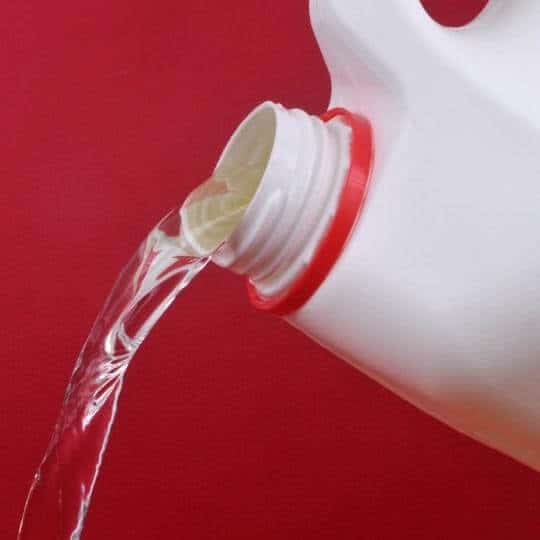
As with most other pipe and drain related problems, we often end up employing bleach. Bleach is, after all, a powerful cleaning item that has enough potency to resolve some of the more persistent problems. However, is it effective against drain flies? [5]
The answer is kind of. Bleach is capable enough of clearing drain flies. However, the big and established nests will not necessarily be dealt with. This is due to bleach flowing quickly through our pipes, not having enough time to properly affect the nests.
The added use of bleach is that it can help with clearing out lighter clogs that can enable drain flies to nest in the first place.
Keep in mind that bleach, especially diluted one, cannot break through any clogs that are more formidable. Obviously, you shouldn’t rely on it for clearing them primarily.
Regardless, it would help if you were careful about using bleach. While the cleaning strength of bleach is useful, it can cause some side issues. Bleach can create toxic fumes when mixed with certain substances.
This includes vinegar, so if you are using the previous cleaning approaches, make sure to avoid following up with bleach shortly after. Any mixing with bleach is heavily discouraged, except with water which can help weaken the bleach.
Weakening bleach can make it less likely to damage septic systems. While this damage may not be noticeable on certain systems, some older systems could have an awful time dealing with it. Although mostly safe for toilets, bleach is capable of corroding lead and plastic pipes, so be careful with its use.
Are drain flies harmful?
As with every pest infestation, it’s fruitful to know just how dangerous the animals that enter our home can be. Drain flies and their harmfulness should also be covered, seeing how easy it is for them to form.
Thankfully, drain flies aren’t known to transmit any disease dangerous to humans or bite. The flies are completely harmless, although annoying, and will not harm us.
However, they can trigger certain medical conditions. The most common one is bronchial asthma in individuals who may be susceptible to it.
Larvae themselves can be problematic, though. Drain fly larvae can cause myiasis, a condition where larvae grow inside of human tissue. However, this is a rare condition because larvae are most frequently found deep in the nests. The larvae will sooner resort to cannibalism than end up reaching the surface.
Regardless, it’s better to stop drain flies from reproducing and keep an eye out for potential side effects. Drain flies aren’t disease-carrying insects, but as we’ve said, they could be a triggering factor for some people.
How to get rid of drain flies in bathroom?
The solutions for drain flies are universal. No matter whether you are dealing with drain flies in the kitchen or in another location, the same methods can be applied.
The problem may also be resolved by pouring a lot of boiling water down the drain. Due to these drains usually having fewer bacteria and problematic materials piling up, a simple solution like this could prove effective.
However, kitchen drains are usually much more troublesome, so jumping to the above solutions is preferred. You could employ salt together with boiling water to get some extra cleaning potency going though.
Related: Tiny Bugs in Hot Water Tanks
Conclusion
The problem of pest infestations is a multifaceted one. However, no more what the most concerning problem we may have with pests, taking care of infestation will be paramount.
Drain flies represent a very common infestation that can happen in every home. They may not be that dangerous because drain flies aren’t known to transmit any diseases, but their presence alone may prove troublesome for us.
The solution to our pest infestation can come in many different ways. We’ll most likely aim to use bleach when nothing else is available. While it can do an alright job against drain flies, the standard caveats of using bleach apply. It is also weak against drain fly wings.
Because of this, other solutions can often be more fruitful and less damaging to our pipes.
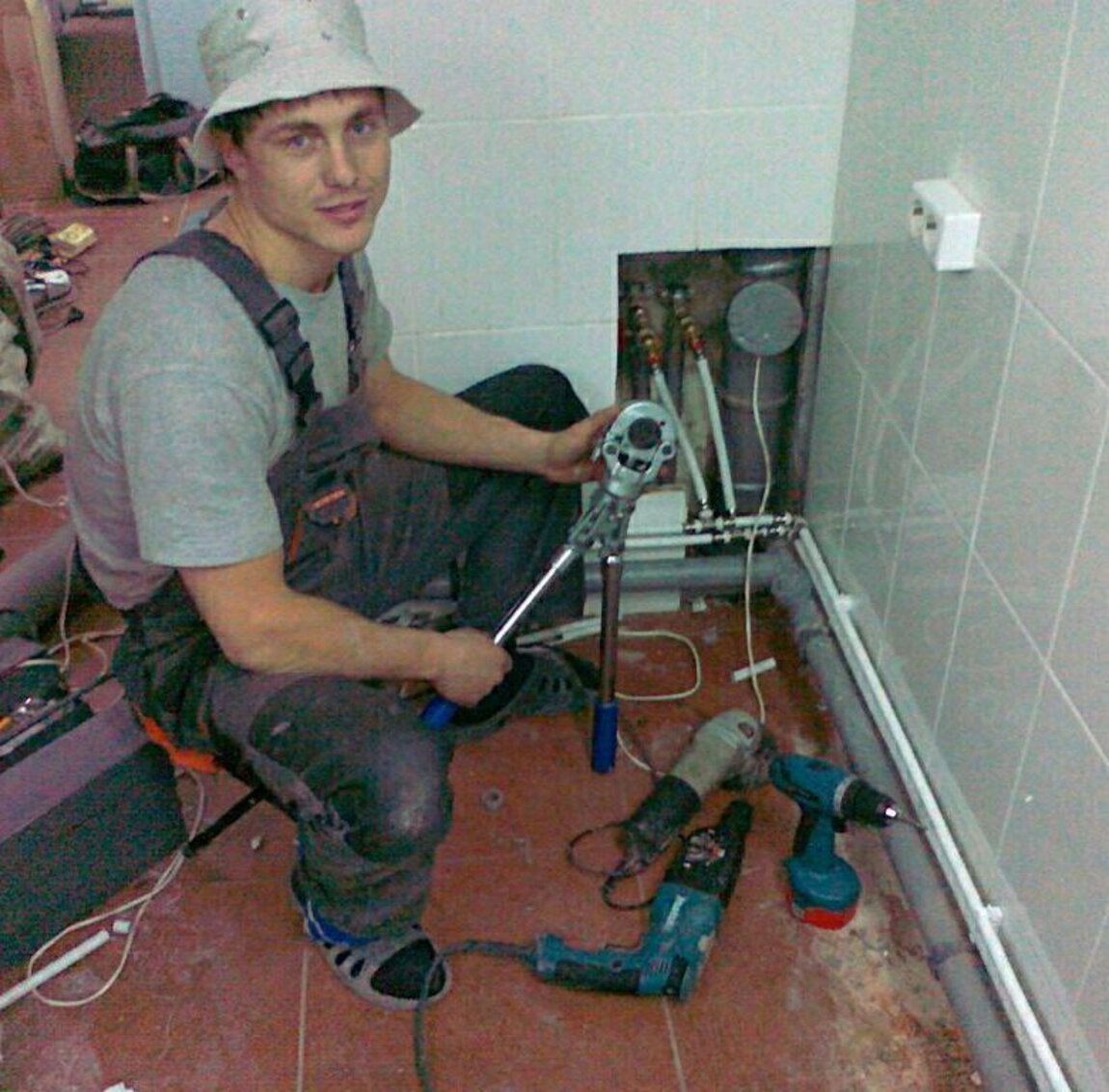
Michael Davis is a heating & plumbing expert who currently works as independent contractor in SC. He also writes for Plumbertip.
For almost 10 years he worked on various plumbing tasks across South Carolina.


